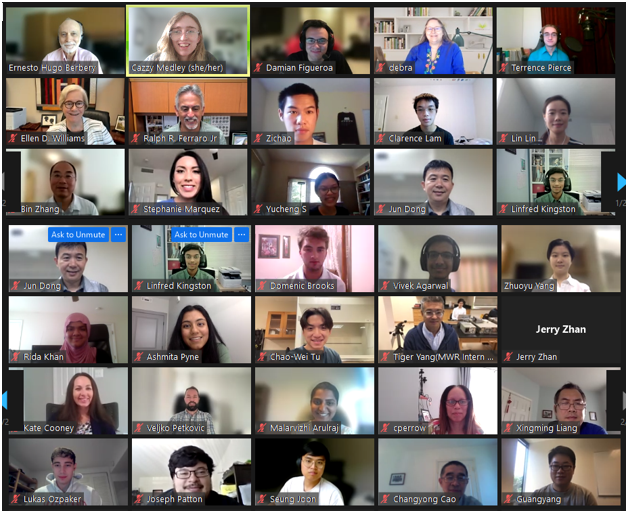
This past summer, ESSIC’s Cooperative Institute for Satellite Earth System Studies (CISESS) welcomed 22 interns to assist in the research of 24 ESSIC/CISESS scientists. Of the interns, three were graduate students, 14 were undergraduates and five were high school students. Several of these students were returning interns from previous semesters.
“Our summer intern program is considered a staple of CISESS,” said Hugo Berbery, Deputy Director of CISESS, “I am delighted to continue and expand the program moving forward.”
These budding scientists spent the summer working with complex technology like machine learning, virtual reality, and calibration/validation of satellite sensors and products. Mentors overwhelmingly noted that their interns were quick to learn new material and made a real impact on their research.
Many of the projects tested machine learning/artificial intelligence methods. In her project with CISESS Scientist Veljko Petković, Vesta Gorooh found that a Convolutional Neural Network encoder decoder algorithm (U-net) showed promise in creating an end-to-end surface precipitation retrieval using multiple satellite sensors (LEO & GEO) over complex surface types while exploring the common and complementing information content of satellite observations.
“[The program was] easy to participate in, had a high-quality poll of candidates, with freedom to choose a project topic, flexibility on work load and format, financial support, highly motivated interns, opportunity to expand into Fall and Spring semester(s),” said Petković, “It was well-organized from the beginning to end.”
Interns enjoyed the program’s flexibility, research opportunities, and real life experience. Many of them spent the summer working with complex technology like machine learning and virtual reality.
“I liked how there was a lot of flexibility,” said Vivek Agarwal, who worked with Jun Dong and Yongzhen Fan to develop an interactive website for viewing the NOAA snowfall rate product that allows users to select location and time and which satellite data to use. “My mentor and I talked about what the best way to go about working on the project was and I was able to largely decide for myself how to implement it. I also liked how the hours were very flexible. Outside of scheduled meetings I could work when it was most comfortable for me as long as I was meeting what we planned for that week.”
Working under supervision of Dr. Malar Arulraj, Lukas Ozpaker explored the potential of CoCoRaHS data to serve as a reference for NOAA satellite precipitation product validation. He successfully transformed the point measurements (rain gauges) of daily precipitation across the U.S. into an aerial product using kriging techniques to demonstrate that this underutilized product has an outstanding potential for implementation into CISESS’s undergoing effort for satellite precipitation validation.
Terrence Pierce, a returning intern working under Daile Zhang working on her CISESS Seed Grant-funded project, commented, “I have conducted a wide range of activities from coding the website, to assisting in the sensor repair process for the lightning mapping array, to combining multiple datasets into a single blended dataset, to using machine learning to determine the type of lightning flash. I have learned vast amounts of HTML, CSS, JavaScript, PHP, Python, and especially MATLAB, but even more importantly, this internship has, and will continue to teach me about the process of conducting research.”
Pierce worked with two other interns, Alex Friedman and Domenic Brooks, to build and deploy tools to better observe lightning. Hu Yang and Jun Dong had two interns for their Radiometer Lab – Chao-Wei Tu and Zhouyu Yang. Guanyang Fang mentored two students, Ashmita Pyne and Damian Figueroa, on his project to conduct real-time NOAA weather and climate product analysis in virtual reality. Lin Lin also had two students, Zichao Liang and Clarence Lam, who worked with artificial intelligence/machine learning for tropical cyclone intensities and satellite images. Jifu Yin had three interns working on different aspects of soil moisture (Agnes Liu, Jessica Zhou and NOAA Intern Stephanie Marquez).
To see a full list of interns and their projects as well as view the intern’s one-slide project summaries, visit the CISESS summer intern home page.
Thanks to Deb Baker and Kate Cooney for their effort to make this a successful experience for all involved!






